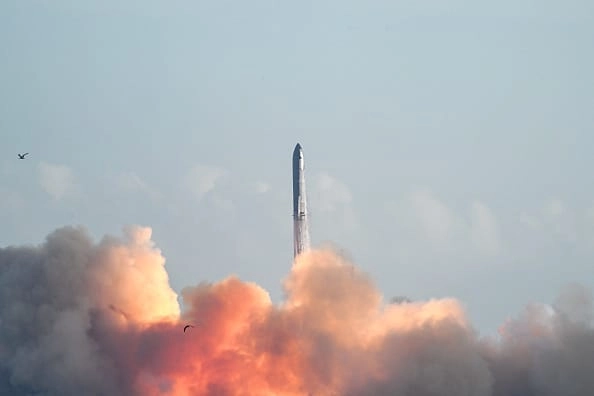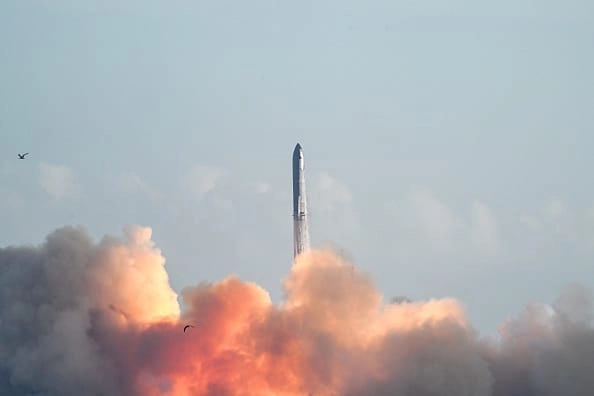 SpaceXs Starship rocket lifts off from Starbase, Texas, as seen from South Padre Island on Aug. 26, 2025, for its 10th test flight.
SpaceXs Starship rocket lifts off from Starbase, Texas, as seen from South Padre Island on Aug. 26, 2025, for its 10th test flight. SpaceX on Tuesday launched its mammoth Starship rocket, breaking a string of explosive failed attempts earlier this year to deploy its first batch of dummy Starlink satellites and notch key developmental milestones.
The more-than 400-feet rocket, critical for SpaceXs commercial dominance and NASAs ambitions to return astronauts to the Moon, took off from the companys Starbase facilities at 6:30 p.m. local time in Texas for a roughly one-hour nail-biting flight.
Throughout the test flight the rockets 10th it made its first successful payload deployment of eight mock Starlink satellites, relit its Raptor engine in orbit and stress trialed its heat shield. The latter performance is of particular note for tech billionaire Elon Musk, who is hoping to deliver reusable heat shields. Typically, rocket heat shields require extensive and costly refurbishment or wholesale replacement after flights.
Following a state separation, the rockets reusable Super Heavy booster which thrusts the Starship into the orbit made a controlled splashdown in the Gulf Coast waters, with the spacecraft following to its own splashdown point in the Indian Ocean after completing its run.
Starships Tuesday launch, coming after two days of delays, will be a welcome turn of tides for SpaceX, which has faced fiery failures during test attempts for the rockets latest, updated variant earlier this year.
Interim NASA head Sean Duffy congratulated SpaceX on social media, noting Flight 102s success paves the way for the Starship Human Landing System that will bring American astronauts back to the Moon on Artemis III. This is a great day for @NASA and our commercial space partners.
NASA has commissioned Starship for the first crewed mission to take humans back to the Moon under the Artemis program, currently scheduled for mid-2027. Its vast payload capacity also makes the rocket integral to Musks broader aspirations for Mars colonization.
SpaceX, which Musk projects will hit $15.5 billion in revenues year, was planning an insider share sale that would value the company at $400 billion, according to a Bloomberg July report citing people familiar with the matter. The firm has taken an aggressive approach of rapid testing to development, amid increasing competition from commercial players that target more cost-effective launches.
Like other U.S. space companies, SpaceX stands to benefit from U.S. President Donald Trumps recent step to streamline federal regulation that oversees commercial rocket launches.




